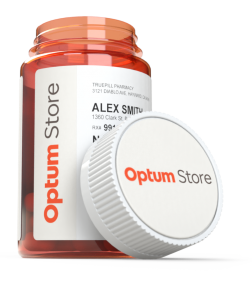
With prescriptions as low as $3 per month, you might be surprised at what you can save with the Optum Store.

Is this common rash making your baby (and you) miserable? Here’s how to get relief, and how to prevent it from happening again.
New parents spend more time pondering their babies’ rear ends than they may have imagined — what comes out of them, what kind of diapers to put on them, how best to care for all that delicate skin. Good thing that little bottom is adorable, because sometimes it can present a problem known as diaper rash. This is a common condition with a medical name: diaper dermatitis (which is a type of contact dermatitis). It happens frequently in infancy.
“Diaper rash is irritation to the skin that is often caused by close contact with urine or feces,” says Suzanne Finn Stevenson, a family nurse practitioner in Lewiston, Maine. Babies who have sensitive skin are particularly prone, she says. Even if you’re a lightning-fast diaper changer, your baby may still end up with a garden-variety rash with pink or red patches.
Diaper rash affects areas covered by a diaper, but it’s not usually found in the folds of the skin, which stay dry. (Those chubby rolls of baby fat can be protective.)
Shop for all your baby and new-mom essentials at the Optum Store, including diaper rash ointments, wipes and more. And have it all delivered to your door.
Diaper rash can happen anytime, but it may be exacerbated by a few things:
Teething: When your baby’s teeth are coming in, she may respond by producing a lot of drool. It may seem as if all that excess moisture ends up on her bibs and onesies. But teething babies also tend to swallow a lot of saliva, which contains digestive enzymes. These, in turn, make your baby’s stool more irritating to her skin.
Allergic reactions: “Babies can get contact dermatitis from preservatives in diapers, wipes, lotions or soaps you may be using,” says Stevenson. This includes soaps that may be used to wash cloth diapers.
Yeast infection: A yeast, or fungus, called candida is another common cause. Doctors call this yeast diaper rash. Candida thrives in warm, moist places. So diapers are a prime spot. Your baby might develop a yeast diaper rash after he's taken antibiotics, says the American Academy of Pediatrics.
Acids in the stool: Your baby’s stool becomes more acidic from diarrhea or a change in diet (such as starting solid foods). When this happens, stool in her dirty diaper can irritate the skin.
Ammonia: This chemical is produced when bacteria breaks down urine. If your baby’s diaper stays wet for too long, ammonia can cause a diaper rash.
Ask 10 parents or a roomful of pediatricians and you’ll get a range of answers, says Stevenson. But there are some proven methods that can relieve irritated tushies and help prevent future rashes:
“Take your child to the pediatrician if the diaper rash worsens rather than resolves,” says Stevenson. Also keep an eye out for open sores or multiple red lesions or dots in the diaper area. “These can indicate a fungal or yeast infection, or a bacterial infection,” explains Stevenson.
If you don’t see improvement in 3 days, make an appointment with your baby’s doctor. If your baby is feverish, that’s also a sign you should seek medical care.
Your doctor will first determine the cause of the rash so they can recommend the right treatment. If a bacterial infection is to blame, antibiotics (either topical or oral) can help clear it up, according to the Mayo Clinic. A yeast infection may be treated with a prescription anti-fungal cream. If your baby has eczema, the pediatrician might have you apply a mild cortisone cream.

With prescriptions as low as $3 per month, you might be surprised at what you can save with the Optum Store.
Additional sources
Causes of diaper rash: National Library of Medicine (2022). “Diaper Rash”
Yeast diaper rash: American Academy of Pediatrics (2020). “Common Diaper Rashes & Treatments”
When to see a doctor: Mt. Sinai (n.d.): “Rash—child under 2 years”
Treatments: Mayo Clinic (2020): “Diaper rash”